Ray Dolby - the Cavendish Laboratory, X-ray microanalysis and noise reduction
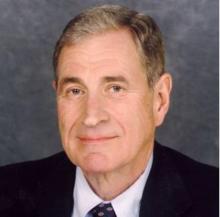 The Dolby family have spoken highly of Ray Dolby’s positive experience as a graduate student in Cambridge and the Cavendish Laboratory. It is intriguing to look at his PhD dissertation for the signs of things to come.
The Dolby family have spoken highly of Ray Dolby’s positive experience as a graduate student in Cambridge and the Cavendish Laboratory. It is intriguing to look at his PhD dissertation for the signs of things to come.
In 1957, Ray Dolby received his B.S. degree in Electrical Engineering from Stanford University. He then won a prestigious Marshall Scholarship to study for a Ph.D. in physics at the Cavendish Laboratory. He became a member of Pembroke College and was awarded a Research Fellowship by the College. He was absolutely delighted by his Research Fellowship and, articularly, by his panelled rooms in Pembroke.
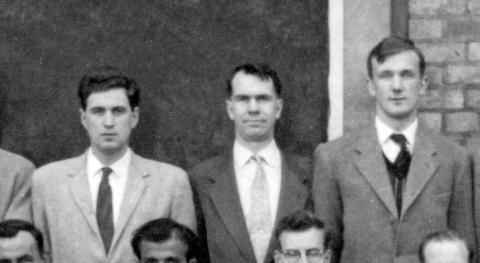 Figure 1. Three pioneers of the many ways in which the unique capabilities of electron microscopy can be exploited. (left to right) Ray Dolby, Bill Nixon and Peter Duncumb. This is image is taken from the 1959 annual photograph of staff and research workers in the Laboratory.
Figure 1. Three pioneers of the many ways in which the unique capabilities of electron microscopy can be exploited. (left to right) Ray Dolby, Bill Nixon and Peter Duncumb. This is image is taken from the 1959 annual photograph of staff and research workers in the Laboratory.
Through the period 1957 to 1961, he carried out research in the Cavendish Laboratory’s Electron Microscope Group under the supervision of its leader, Ellis Cosslett. His PhD thesis concerned the X-ray spectroscopy of the light elements, particularly carbon, a material of great importance in materials science but it was very difficult to measure at that time because of the low energies of the characteristic X-rays. Under Cosslett's guidance and with friendly exchanges within the group, he found a solution, which depended upon extracting a tiny signal from the ‘noise’ from other X-rays. The summary of his PhD dissertation explains what he did:
This dissertation describes some new methods for discriminating between the light element characteristic wavelengths in an X-ray scanning microscope. For long wavelength microanalysis purposes, the classical methods of X-ray spectroscopy are impractical. The proportional counter, the best of several possibilities, has therefore been employed as a dispersive detector, the output pulses subsequently being analysed electronically to yield the necessary line intensity information. Proportional counter operation with low energy X-rays is analysed and discussed, and the construction of a suitable counter described. Measurements of the quantum yields from carbon and aluminium, made with this counter are reported; these measurements, apart from their fundamental significance, provide an estimate of the performance to be expected from a light element analyser. Several methods of pulse height distribution analysis (deconvolution) are described practically and analysed theoretically. One of the methods, in which the outputs from several pulse analyser channels are treated as a set of linear equations, which can be solved simultaneously in an electrical network, is chosen for the development and incorporation into a scanning microanalyser. The design, construction and operation of this instrument are described; its use is demonstrated in several practical examples. The results are presented as pictures with resolution of 4-5 microns, showing the surface concentrations of elements as light as beryllium (Z = 4).
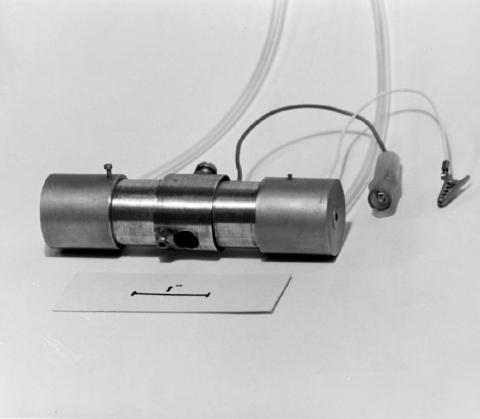
Figure 2. The proportional counter used to measure the X-ray spectrum of light elements such as oxygen and carbon.
The wide range of skills needed to accomplish this research programme successfully is most impressive. Efficient proportional counters and electronic circuitry were built into the scanning electron microscope and theoretical analyses of the best way of extracting meaningful images from noisy data were carried out. These were then brought together to make a very significant advance in understanding the structure of metals and alloys. His proportional counter and the overall experimental set-up are shown in Figures 2 and 3.
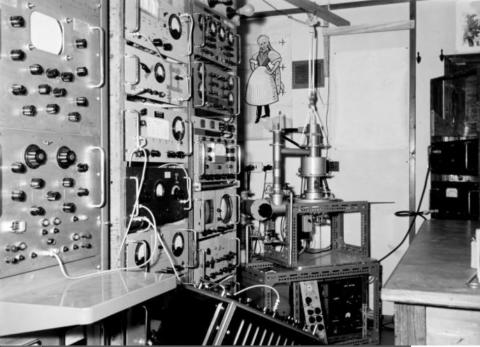 Figure 3. The apparatus used in Dolby’s X-ray microanalysis project.
Figure 3. The apparatus used in Dolby’s X-ray microanalysis project.
The success of the programme is illustrated by Dolby’s images of a magnesium specimen which included inclusions, previously thought to be some form of oxide. In fact, the images in Figure 3 show that the inclusions are of carbon, which is crucial in understanding the properties of metals and alloys. The result was six papers in the literature describing these research achievements. Particularly impressive is his 1959 sole author paper in the Proceeding of the Physical Society of London, which was actually submitted in July 1958, less than one year into his PhD programme. In 1960 he was elected to the Pembroke Fellowship as the then Drapers’ Senior Research Student, and became the Drapers’ Research Fellow after he received his PhD in 1961. He left the Fellowship in March 1963, founding Dolby Laboratories in 1965. He was elected an Honorary Fellow of Pembroke College in 1983.'
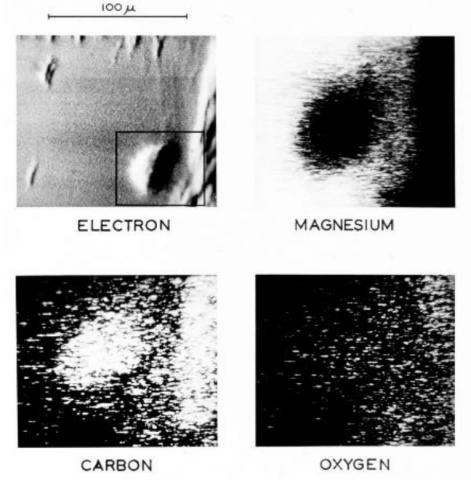
Figure 4. Images of a magnesium specimen with a carbon inclusion, previously thought to be an oxide inclusion.
Before his arrival in Cambridge, Dolby had already published in 1957 two single author papers on video tape recording amplifiers – he was clearly already an electronics expert, particularly in signal recording and reproduction. He continued his interest in audio reproduction while he was in Cambridge and demonstrated with pride his Quad loudspeakers in his rooms in Pembroke, another instance of a consuming passion for quality.
This interest in extracting weak signals from noise played a role in his theoretical analysis of Section 6.2.2, pages 95-99 of his dissertation entitled ‘Time-reversal Deconvolution (Continuous Frequency)’. As he writes:
It has long been recognised that recording a signal on, for example, magnetic tape and playing it back in reverse gives an effective time reversal. The implications of this phenomenon have only recently been appreciated. Bogart (1957) has used this principle to correct the phase response of a long telephone cable by means of a magnetic tape record-reverse-reproduce system stationed at the half-way point.
This procedure was then adapted to improve the deconvolution procedures needed to separate the light element signatures in the output of the proportional counter. The seeds of his innovations in what is now called the Dolby noise reduction system is present in his theoretical analysis of noise reduction by deconvolution. He was awarded his Ph.D in 1961.
From 1963 to 1965, he was United Nations Technical Advisor and helped set up the Central Scientific Instruments Organization in India. In 1965, he set up the Dolby Laboratories in London to develop noise reduction and signal processing systems for improving sound quality. The Dolby noise-reduction system works by increasing the volume of low-level, high-frequency sounds during recording and correspondingly reducing them during playback. This reduction in high-frequency volume reduces the audible level of tape hiss. The Dolby noise reduction technologies have become an essential part of the creative process for all recording artists and filmmakers. In 1976, he moved the company to San Francisco, where its headquarters has remained ever since. Ray Dolby was awarded the Honorary Degree of Doctor of Science by the University of Cambridge in 2000.
Reading his PhD shows clearly the remarkable effort and ingenuity Ray Dolby lavished on his research project with its superb combination of experimental and theoretical technique and insight. He grasped the opportunities in these burgeoning areas of electron microscopy and condensed matter physics and gained all the experience needed to carry out his future innovations in audio noise reduction.
Malcolm Longair.
